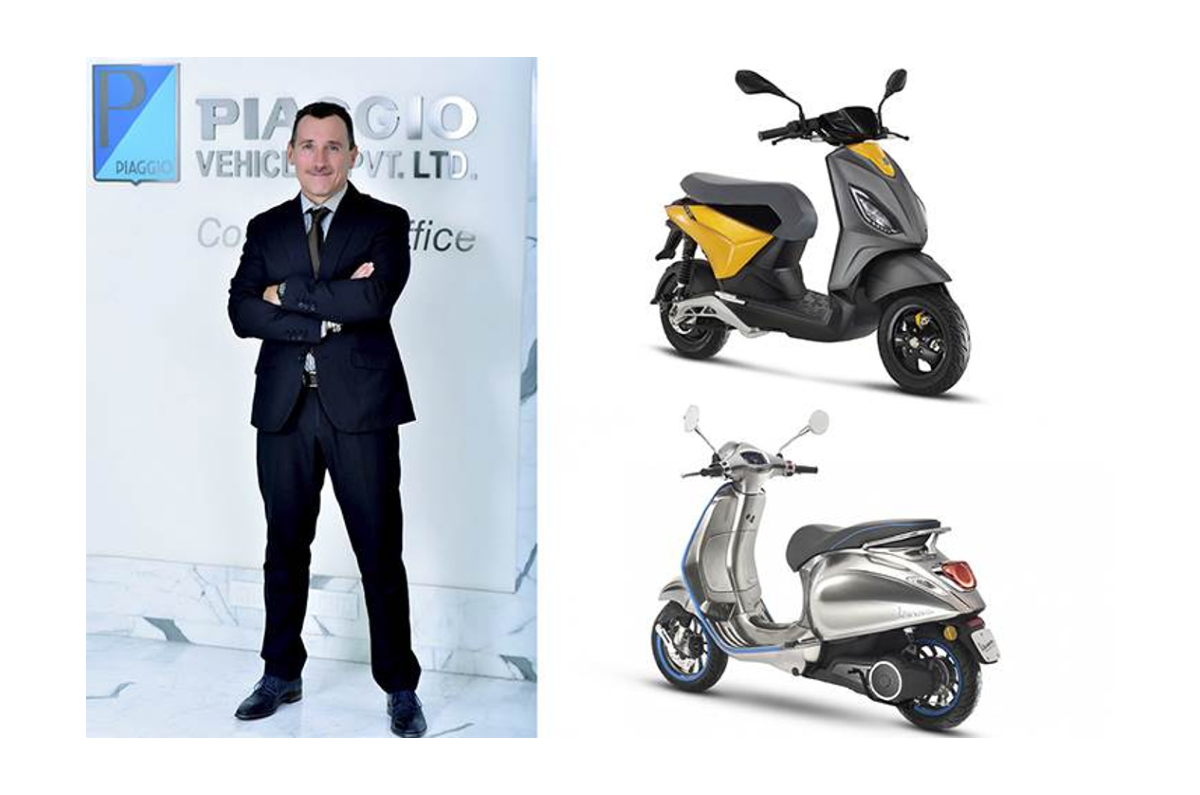The Indian electric two-wheeler market, billed as the low-hanging fruit of the EV industry along with electric three-wheelers, is seeing action aplenty. Not a day goes by without news of either a new product in the offing, an OEM announcing a plant location or a retail strategy designed to draw consumers.
The Central government and many states are bullish on the transition from petrol-engined two-wheelers to emission-free products and offer plenty of subsidies to buyers. The e-two-wheeler market in India is now buzzing with start-ups, new players and also major OEMs like Bajaj Auto, TVS Motor Co and the soon-to-enter Hero MotoCorp. However, there does not seem to be major consensus or a consortium about voluntary standardisation of tech.
According to Diego Graffi, chairman and MD, Piaggio Vehicles, “My experience with India is that getting so many players to agree on one thing is honestly very difficult.” An interesting observation or harsh reality?
Graffi goes on to explain that when it comes to an alliance, like the one Piaggio has with KTM, Yamaha and Honda in Europe, it is because of the low two-wheeler volumes. “The point of difference between Europe and India is the size of the market. For the European market, if you have to create a battery swapping network you have to create a mass volume to create a standard. In India, the volume is already there so you can afford to have 2-3 standards.”
While Piaggio has introduced the Vespa Elettrica and recently showcased the Piaggio One modular platform for the global market, the products are not likely to be introduced in India. It is no secret that Piaggio is developing an electric two-wheeler for the Indian market, but details are scarce. Graffi says, “We will enter the electric two-wheeler space with a product that will provide us a competitive advantage in terms of customer experience for the next 5-6 years. That is why we are taking longer. The product is being designed and developed in Italy for the global market.”
He recollects that when he joined Piaggio India in 2017, the e-scooter market was in a very nascent stage. “But in just 4 years, we have seen how a number of players have come up. This is what is beautiful about India – you see a quantum leap in terms of technology in just a couple years. What happens in other parts of the world over 10 years, happens in India in just 2-3 years.”
Incentivised EV buying not sustainable
According to Piaggio Vehicles’ chief, while there are many subsidies being provided on electric two-wheelers at present, it is not a sustainable route for the market, an example of which can be seen in China. Graffi believes incentivisation is not a sustainable business for electric two-wheelers. “It is good in the short-and-medium term, but in the long run you cannot rely on just incentives. You have to create a ground of competitiveness in India, where battery and powertrain costs are more affordable than the ICE scooter.”
Sharing his views on the benefits of battery swapping versus charging, Graffi believes that both will go hand-in-hand. “I believe both will grow parallelly. Swappable and portable is almost the same.” Piaggio says it is working closely with its supplier base to create a local manufacturing ecosystem for its EV plans.
Also see:
Electric two wheeler space heating up in India

